Dr Ranjan Kelkar’s Article in Marathi “माझे जीवन गाणे”, or the Song of My Life, was published in the Feb 2024 issue of the Marathi magazine Dnyanodaya. Read here.
“माझे जीवन गाणे”
(डॉ. रंजन केळकर)
“माझे जीवन गाणे” म्हणजे मंगेश पाडगावकरांचे शब्द, पु. ल. देशपांडे यांचे संगीत आणि पंडित जीतेन्द्र अभिषेकींच्या ताना व आलाप यांचा त्रिवेणी संगम. त्यांच्यासारखे गाणे लिहायची, ते संगीतबद्ध करायची किंवा ते गायची माझी पात्रता नाही. पण खरे तर प्रत्येक माणसाचे आपले एक गाणे असते, जे तो स्वतः लिहितो, स्वतः जगतो आणि स्वतःसाठी गातो. असेच माझेही एक जीवन गाणे आहे.
माझ्या जीवन गाण्याची सुरवात १९ डिसेंबर १९४३ ला झाली जेव्हा मुंबईतील एका ख्रिस्ती कुटुंबात मी जन्माला आलो. मला आठवते की, माझी आई इंदुमती नेहमी गाणी गात राहायची, मराठी, हिंदी, इंग्रजी, नाटकातील, चित्रपटातील, उपासनासंगीतातील. तिची गाणी ऐकता ऐकता मी लहानाचा मोठा झालो. माझा भाऊ सदानंद मला व माझी बहीण सुरेखा हिला इंग्रजी कोरसेस शिकवीत असे जे अजूनही मला पाठ आहेत. आमच्या घरी पाहुणे आले किंवा आम्ही कोणाला भेटायला गेलो तर आम्ही गाणी म्हणून त्यांची करमणूक करत असू. नंतर संडे स्कूलमध्ये, चर्चमध्ये मी गाणी गाऊ लागलो. माझे वडील रत्नाकर फारसे गायक नव्हते पण ते खूप लिहायचे. त्यांचे हात कापत असल्यामुळे आणि त्यांना नीट दिसत नसल्यामुळे ते दररोज दोनतीन पाने माझ्याकडून लिहून घ्यायचे. ते लिहिता लिहिता मला पवित्र शास्त्रातील वचने पाठ होऊ लागली आणि माझा ख्रिस्ती धर्माचा अभ्यासही झाला.
हे कदाचित खरे आहे की, माणूस जीवनात काय बनणार असतो ते देवाने आधीच ठरवलेले असते. मी पुणे विद्यापीठात पदव्युत्तर वर्गात असताना मला भारत सरकारच्या अणुशक्ती विभागाची मासिक शिष्यवृत्ती मिळत असे. त्याकाळी ती रक्कम मोठी होती आणि आमच्या कुटुंबाचा बराचसा घरखर्च त्यातून भागत असे. १९६४ साली मी एम.एससी. झाल्यावर अणुशक्ती विभाग मला मुंबईत नोकरी देणार होता. पण अचानक त्याने मला नोकरी न देण्याचे ठरवले. अर्थात मी निराश झालो आणि अन्य नोकरीचा शोध घेऊ लागलो. योगायोग असा की, १९६५ मध्ये भारतीय हवामानशास्त्र विभागाने पुण्यात मला नोकरी देऊ केली आणि त्या खात्यात मी ३८ वर्षे सेवा केली. १९९८ ते २००३ च्या दरम्यान मी हवामान विभागाच्या प्रमुख पदी असताना तीन घटना घडल्या. १९९९ मध्ये उडीशा राज्यावर आलेले भीषण चक्री वादळ ज्याने दहा हजार लोकांचा बळी घेतला, २००१ मध्ये गुजरातमधील भूज नगर जमीनदोस्त करणारा भूकंप ज्यात वीस हजार लोक क्षणार्धात मृत्युमुखी पडले आणि २००२ मध्ये देशावर पडलेला महादुष्काळ. त्याच सुमारास २००० साली माझी पत्नी मोनिका हिचे निधन झाल्याने जीवन मरणाकडे मी एका निराळ्याच दृष्टीने पाहू लागलो. २००३ साली मी सेवानिवृत्त झाल्यावर आणि दिल्लीहून पुण्याला स्थलांतर केल्यावर मी आध्यात्मिकतेकडे झुकलो. मी बराच अभ्यास केला, अनेक पुस्तके लिहिली, वृत्तपत्रात लेख लिहिले, १५ वेब साईट बनवल्या.
प्रभू येशूकडून एखादे अद्भुत चिन्ह मागणाऱ्या लोकांना तो म्हणाला होता की, आकाशाचे रूप ते ओळखू शकतात पण काळाची चिन्हे त्यांना दिसत नाहीत. हवामान विभागात इतकी वर्षे काम करत असताना मी आकाशाकडे बघत असे तो केवळ कामापुरता. माझा बराच वेळ संगणकांसमोर, बैठकांत, लोकांशी चर्चा करण्यात, जात असे. आकाशाकडे निरखून पाहायची खरी संधी मला लाभली ती निवृत्तीनंतर. सध्या मी एका उंच इमारतीच्या नवव्या मजल्यावर राहतो. मी गच्चीत उभा राहिलो की मला एक विस्तीर्ण दृश्य दिसते. दिवसाच्या चोवीस तासात आकाशाचे रूप एकसारखे बदलत असते. पहाटेचा संधिप्रकाश, गुलाबी नारिंगी आकाश, डोंगरामागून वर येणारी सोनेरी किरणे मी माझ्या मोबाइल कॅमेऱ्यात जतन करून ठेवतो. माझ्या बागेतील कालची कळी जर उमलून आज एक सुरेख फूल झाली असेल, त्याच्या पाकळ्यांवर दवबिंदू असतील, तर त्याचाही फोटो घेतो. दुपारी निळे आकाश, त्यावर तरंगत जाणारे पांढरे शुभ्र ढग मला दिसतात. माझ्यापासून थोड्या अंतरावर असलेल्या तलावात त्यांचे प्रतिबिंब मला दिसते. नैऋत्येकडून येणाऱ्या मॉन्सूनच्या ढगांचा मागोवा मला घेता येतो.
आकाश नेहमी मोहक असते असे मात्र नाही. कधी काळे कुट्ट मेघ दाटून येतात. विजा लखलखतात आणि गडगडाट होतो. विजांच्या नक्षीचे फोटो घेणे सोपे नसते पण मी प्रयत्न करतो. त्यानंतर अकस्मात आकाशात सप्तरंगी धनुष्य दिसते, जणू परमेश्वराच्या करुणेचे चिन्ह. माणसाचे जीवन असेच आहे. ते कधी सुंदर असते तर कधी भेडसावणारे, कधी परीक्षा घेणारे. तरी परमेश्वराची करुणा जेव्हा अकस्मात प्रकट होते तेव्हा जीवन सार्थक झाल्यासारखे वाटते.
जेव्हा मी गच्चीत उभा राहून आकाशाचे निरीक्षण करत नसतो तेव्हा मी काय करत असतो? मी कधीच योगसाधना केलेली नाही. मनाला व शरीराला चालना द्यायचे अनेक पर्याय आहेत. कधी कधी मी चित्रे रंगवतो, कधी वाचण्यात आलेली एखादी नवीन रेसिपी बनवायचा प्रयत्न करतो, ज्यात मी बहुदा यशस्वीही होतो. मी खूप लवकर झोपतो आणि खूप लवकर उठतो. पहाटे उठताच आणि रात्री झोपण्यापूर्वी मी प्रार्थना करतो. सकाळी देवाचे उपकार मानायचे त्याने आयुष्यात आणखी एक दिवस दाखवल्याबद्दल. रात्रीच्या प्रार्थनेत क्षमेची याचना करायची, इतरांची आवर्जून आठवण करायची, परमेश्वराला काहीही अशक्य नाही हे मनात बाळगून त्याच्याशी संवाद साधायचा.
मला ऐंशी वर्षांचे आयुष्य लाभेल असे मला तरुणपणी कधीच वाटले नव्हते. दीर्घकाळ जगण्यासाठी मी कधी प्रयत्न केले नाहीत किंवा म्हातारपण सुखी व्हावे म्हणून बेत आखले नाहीत. आज मी जो काही आहे तो परमेश्वराच्या कृपेने आहे, हे मला जाणीवपूर्वक म्हणावेसे वाटते. माझ्या हृदयाचा प्रत्येक ठोका, मी घेतलेला एक एक श्वास, देवाचे कृपादानच आहे. ऐंशी वय झाल्यावर भविष्यकाळ अचानक अतिशय छोटा भासू लागतो आणि भूतकाळ दूरवरचा, लांबच लांब. वर्तमानात जगणे दिवसेंदिवस कठीण वाटायला लागते. मग आपल्या गरजा वाढत जात असताना, परमेश्वर एका अदृश्य साथीदाराच्या रूपात क्षणोक्षणी, पदोपदी, आपल्या मदतीस येऊ लागतो. ही त्याची प्रीती आणि करुणा नाही तर मग काय?
स्तोत्रसंहिता हे पवित्र शास्त्रातील अतिशय लोकप्रिय आणि वाचनीय पुस्तक आहे. त्यातील १५० स्तोत्रे आता गद्य रूपात वाचली जात असली तरी मुळात ती चालीवर गाइली जायची. त्यांतील अनेक स्तोत्रे ही त्या त्या कवींची आपआपली जीवन गाणी होती. स्तोत्र ९० हे मोशेचे जीवन गाणे आहे, तर स्तोत्र २३ हे दावीदचे जीवन गाणे आहे. मोशे व दावीद दोघेही परमेश्वराला आपले निवासस्थान मानतात. जीवनाच्या क्षणभंगुरतेची जाणीव दोघांनाही आहे. परमेश्वराच्या असीम कृपेचा आणि अखंड पुरवठ्याचा अनुभव दोघांनाही आहे. दोघांनाही परमेश्वराच्या सान्निध्यात सनातन जीवन जगण्याची अभिलाषा आहे.
स्तोत्र २३ व स्तोत्र ९० सलगपणे वाचली तर त्यातून माझ्यासारख्या एका सामान्य ख्रिस्ती माणसाचे जीवन गाणे बनते. दावीद म्हणतो तसे माझे जीवन आशीर्वादांनी काठोकाठ भरून वाहत चालले आहे. मोशेने सांगितलेली ऐंशी वर्षांची मर्यादा मी गाठली आहे. ‘आम्हांला आमचे दिवस असे गणण्यास शिकव की, आम्हांला सुज्ञ अंतःकरण प्राप्त होईल’, ही मोशेची प्रार्थना माझीही प्रार्थना आहे.
माझ्या घरी येणाऱ्यांच्या नजरेत लगेच भरतो तो पुस्तकांचा माझा मोठा संग्रह. मी स्वतंत्रपणे राहत असल्याचे जेव्हा त्यांना समजते तेव्हा त्यांना वाटते की मी पुस्तकांच्या सोबतीत जगत असेन. हो, मी खूप वाचतो, थोडे लिहितोसुद्धा. पण पुस्तके माझे सोबती नाहीत. माझा खरा सोबती माझा परमेश्वर आहे. तो कधीच माझी साथ सोडत नाही. माझे जीवन गाणे तो माझ्याबरोबर गात असतो.
शेवटी, चार ओळी माझ्या शब्दांत पण त्याच शैलीत:
माझे जीवन गाणे । माझे जीवन गाणे ।
गतकाळाची खंत नसू दे,
हृदयी माझ्या ख्रिस्त वसू दे,
आकाशी मज स्वर्ग दिसू दे, प्रभु मुख नित्य पहाणे ।।
००००००००००

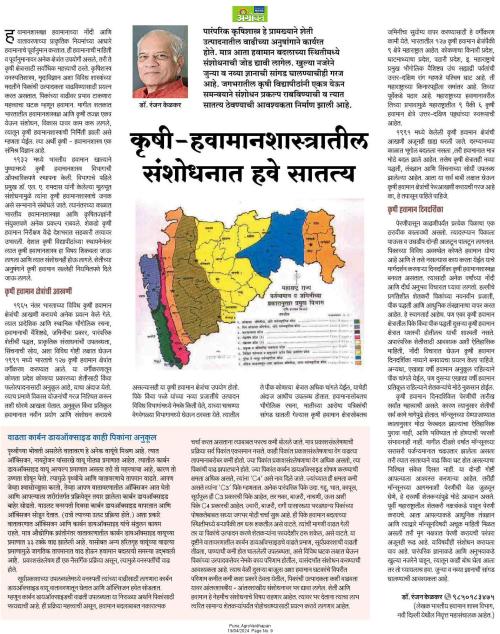
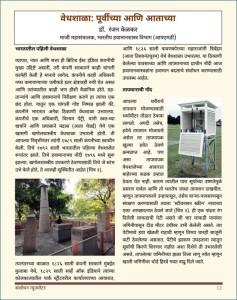
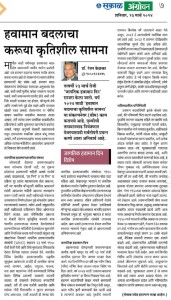

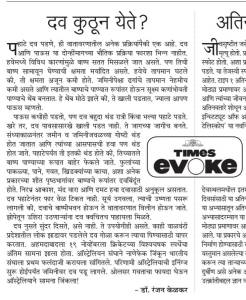
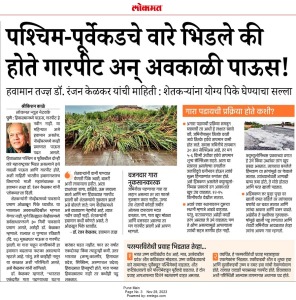
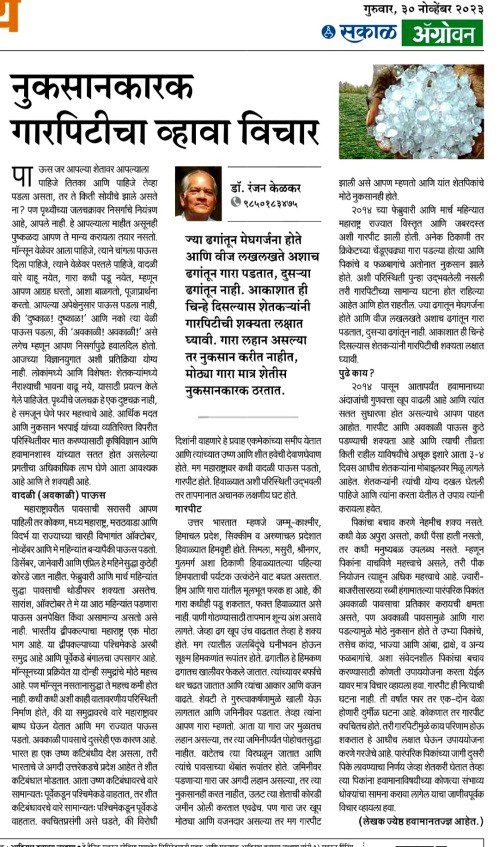
Recent Comments